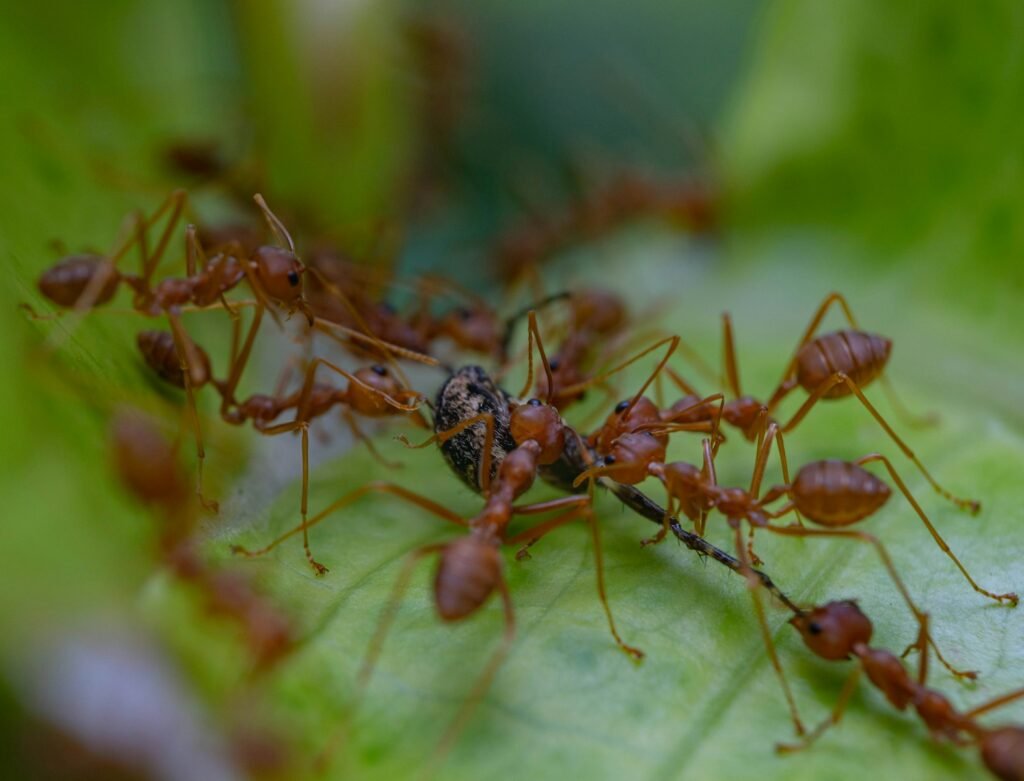Scientists have a new way to read the ocean’s cast of characters: not by taxonomy alone, but by the raw energies they embody. Water, fire, air, and earth might sound like poetry, yet these elements map surprisingly well onto real marine behaviors measured by sensors, tags, and decades of field notes. The question isn’t whether myth can guide science, but how metaphor can point us toward patterns we might otherwise miss. I remember a night watch on a research vessel when flying fish burst from the swells like silver sparks; in that instant, “air” didn’t feel abstract at all. Today, researchers are blending that sense of wonder with instrument-grade evidence to understand the elemental engines that move life beneath the waves.
Water in Motion: Octopuses and Jellyfish

Water is the element of flow, and few ocean species wear that badge as naturally as octopuses. Their bodies are practically liquid architecture, slipping through bottle-neck crevices and morphing shape in a heartbeat, guided by a nervous system distributed through flexible arms. Camouflage ripples across their skin via chromatophores that open and close like living pixels, a moving reminder that water’s strength lies in adaptation. In the lab, problem-solving trials show octopuses learning mazes and manipulating jars, a cognitive agility that mirrors currents finding new paths.
Jellyfish take the opposite approach to the same element: they surrender to flow and turn drifting into a strategy. Their bell pulses act like a soft engine, but most of the heavy lifting is done by tides and gyres, allowing blooms to appear across vast distances. Some species can revert to earlier life stages, dodging finality in a way that screams water’s cyclical nature. Even box jellies, with surprisingly complex eyes, navigate light and shadow to stay in the lane of survival.
Fire Unleashed: Mantis Shrimps and Warm-Body Hunters

Fire lives in the sea as sudden release – power concentrated in a blink – and the mantis shrimp is its bright flare. When it strikes, the club accelerates so fast it spawns cavitation bubbles, microbursts that collapse with momentary heat and shock, doubling the damage. High-speed cameras reveal impacts that look more like tiny explosions than punches, and prey shells don’t stand a chance. The physics reads like a matchhead and spark, crammed into a crustacean’s fist.
Fire also burns as biological tempo, and warm-bodied hunters carry that torch. Tunas and some sharks keep core muscles warmer than the water around them, using specialized blood-vessel heat exchangers to recycle energy. That extra warmth buys speed, endurance, and wide-ranging hunts across temperature fronts where colder species hesitate. In energetic terms, they are flames moving through blue darkness, stoked by muscle furnaces that never truly cool.
Borrowed Air: Flying Fish, Rays, and Whale Bubbles

Air in the ocean is the art of reducing drag, stealing lift, and bending physics to your will. Flying fish shoot from the surface, spread winglike fins, and glide 50-400 meters using updrafts born from their own speed and the wave face beneath them. Mobula rays take the performance vertical, breaching like spring-loaded kites and crashing back with a thud you can feel in your ribs. When I first saw a mass breach from a skiff at dawn, it looked like the sky was briefly borrowing fish.
Whales work with air differently, engineering it. Humpbacks craft spiraling nets of bubbles to corral herring, tuning the bubble size and shape to herd prey like unseen fences. Squid can even glide above the surface for a few heartbeats, jetting water backward to lift themselves forward. In all cases, “air” is less about lungs and more about the physics of escape, capture, and clever shortcuts through a thick medium.
Building the Ground: Corals, Parrotfish, and Sea Cucumbers

Earth is the element of structure, and coral reefs are its skyscrapers. Colonial corals build calcium carbonate frameworks that can rise into labyrinths of ledges, caves, and cliffs, turning a flat seafloor into a city. Fish and invertebrates lease every apartment available, and waves break harmlessly against reef ramparts that soften storms. Measured in coastal protection, this is geology done by animals in real time.
But the construction crew is larger than we think. Parrotfish scrape algae from coral, grinding bits of rock into fine sand that later sifts into beaches where we set our towels. Sea cucumbers rework the seabed by eating detritus and excreting cleaner sediments, cycling nutrients that keep the foundation alive. Together, these species pour, chisel, and sift the ocean’s concrete, making “earth” a living process rather than a static thing.
From Ancient Tools to Modern Science

We once explained marine mysteries with stories and stars; now, we strap on sensors, release drones, and sift DNA from seawater. Satellite tags follow tunas across entire basins, while accelerometers on sharks record bursts that line up with frontal zones and feeding events. Octopus studies use high-resolution video and pattern analysis to map skin color changes onto behavior with the precision of a heartbeat monitor. Acoustic arrays log the thunderclap of mantis shrimp strikes and the hush of whale bubble nets, matching soundscapes to action scenes.
Environmental DNA reveals who has passed through a current, like footprints in a liquid trail, while AI models knit those clues into forecasts. Even the “earth” behind reefs pops out in lidar seafloor scans, showing where storm damage chewed away corners and where new ridges are quietly forming. The upshot is simple: our elemental lens is poetry, but our measurements are hard numbers. When the two agree, we know we’re onto something real.
Why It Matters

Linking creatures to elemental energies isn’t a cute parlor trick; it’s a communication tool that lands with people who don’t read journal paywalls. When communities hear that corals “build the ground,” the idea of protecting reef builders becomes tangible, like supporting the local bricklayer after a storm. When fishers grasp that warm-bodied predators carry “fire,” seasonal closures around heat fronts make practical sense, not just regulatory noise. And when educators teach octopus intelligence as the “flow” of water, curiosity spikes in classrooms where science once felt distant.
There’s also a systems benefit. Policy makers weigh options faster when data is paired with metaphors that capture the mechanics at a glance. Coastal planners can picture reefs as living berms and invest accordingly, while tuna treaties adapt to the moving heat lines those fish chase. In an age of rapid change, anything that accelerates understanding without bending the facts is more than helpful – it’s essential infrastructure.
The Future Landscape

New tags will miniaturize further, turning flying fish and squid into airborne laboratories that log wind, humidity, and the exact physics of glide. Reef mapping will shift from annual surveys to weekly 3D updates as satellites and autonomous vehicles stitch together millimeter-scale change. eDNA will move from snapshots to continuous sampling, letting us see mantis shrimp territories, spawning pulses, and jellyfish blooms before they hit the news cycle. Meanwhile, models will merge animal-borne data with ocean forecasts, predicting where “fire” feeds, where “water” learns, and where “earth” grows next.
The challenges are blunt. Climate-driven heat waves hammer corals, shifting the balance from builders to breakers, and deep-sea mining could scrape away communities we barely understand. Data equity will matter, because some nations control huge blue corridors while others face the risks without the sensors. Still, the toolkit is rising to meet the moment, and it’s pointing us toward targeted protections that follow the animals instead of fat lines on a map.
Conclusion

You don’t need a research vessel to join in; start by noticing which elemental energies your local coast hosts, from reef rubble that hints at “earth” to baitfish showers that shout “air.” Support marine protected areas that shelter builders, burners, and gliders alike, and choose seafood from fisheries that track their catch with modern monitoring. Cut plastic, reduce runoff, and respect seasonal closures where warm-bodied hunters gather, because small choices scale when entire communities lean in. If you enjoy citizen science, log sightings on reputable platforms and share observations with local educators who can turn them into lessons.
Most of all, keep the story alive. Tell a kid that parrotfish make beaches or that an octopus can slip through a keyhole, and watch the spark catch. Once wonder ignites, policy follows, because people protect what they understand. Which element did you see first in your corner of the sea?

Suhail Ahmed is a passionate digital professional and nature enthusiast with over 8 years of experience in content strategy, SEO, web development, and digital operations. Alongside his freelance journey, Suhail actively contributes to nature and wildlife platforms like Discover Wildlife, where he channels his curiosity for the planet into engaging, educational storytelling.
With a strong background in managing digital ecosystems — from ecommerce stores and WordPress websites to social media and automation — Suhail merges technical precision with creative insight. His content reflects a rare balance: SEO-friendly yet deeply human, data-informed yet emotionally resonant.
Driven by a love for discovery and storytelling, Suhail believes in using digital platforms to amplify causes that matter — especially those protecting Earth’s biodiversity and inspiring sustainable living. Whether he’s managing online projects or crafting wildlife content, his goal remains the same: to inform, inspire, and leave a positive digital footprint.




